We must use our imagination to visualise the appearance of the street before the 19th Century, and it must have undergone transformation through various preceding centuries. The earliest maps of the village from the late 18th Century already show it as the mostly densely built area of the village.
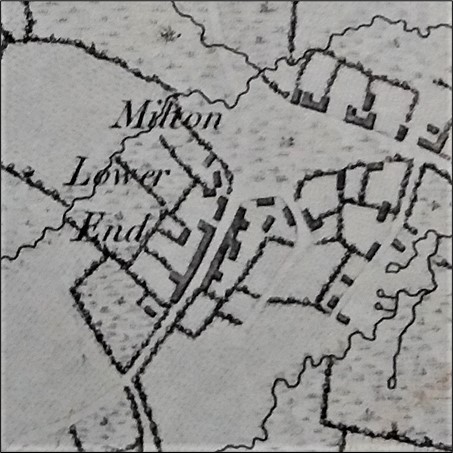
There are remnants of some properties that date back to the 17th Century. Most notable of these is part of the house now known as The Old Bakery (number 47). Here the tall steep gable at the left may be part of an original 17th Century farmhouse. Though since much added to throughout subsequent centuries, it is accompanied by a few small barns that have now been converted to further accommodation.
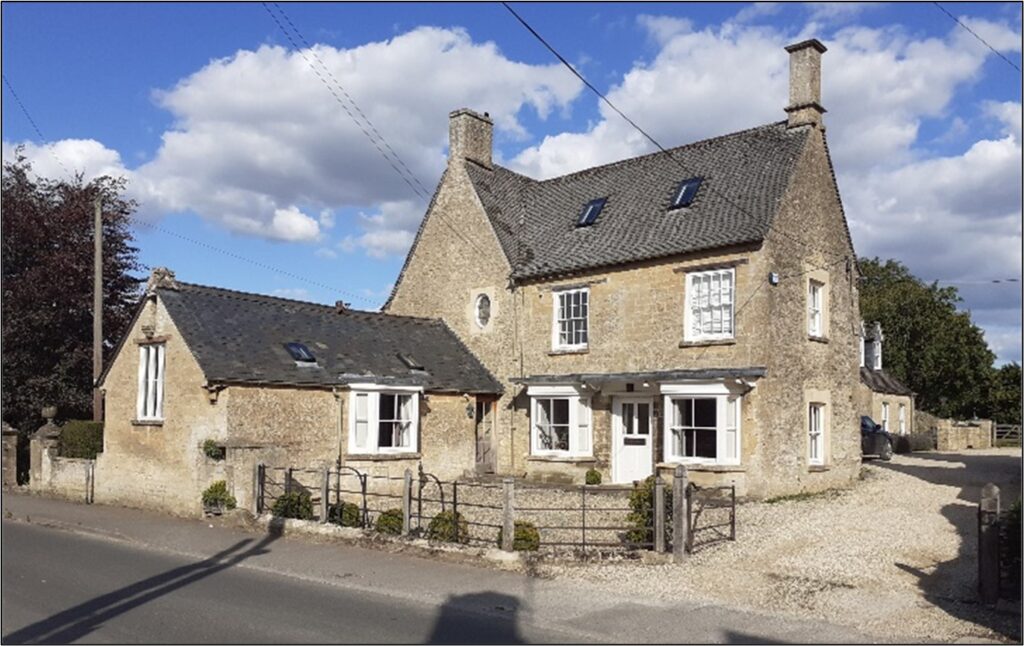
The built form of the High Street as we know it today begins with some significant buildings from the 18th Century. However, it must be noted that most of the buildings now standing are from the 19th Century, with significant 20th and 21st Century additions.
There are two early houses on the street that have a date stone to their facades. Number 23 is a modest former farmhouse, grade II listed with a date stone of 1724 accompanied by the initials “W” over “RE” thought to be Richard and Elizabeth White. Number 38 (“Stone Porch”) has a stone plaque with the initials RW and the date 1725. Whilst these two appear relatively modest “cottages” to us now, these were probably significant houses in their day, lived in by persons of some financial and social status. With their finely dressed stone facades, these were not agricultural workers cottages.
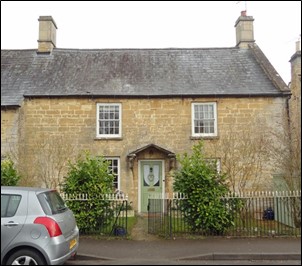
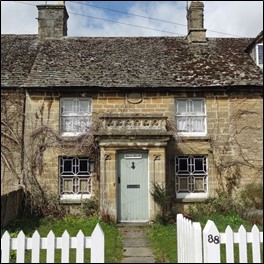
Whilst these more finely built houses indicate a certain prosperity within the village from the early 18th Century, the housing for the working classes would have been much more modest, and less substantially built. It is for that reason that such housing is now much less in evidence. However, some indication of the housing for agricultural workers and other ancillary workers are evident in The Terrace. This is a row of modest stone-built cottages at right angles to the High Street, between numbers 23 and 25.
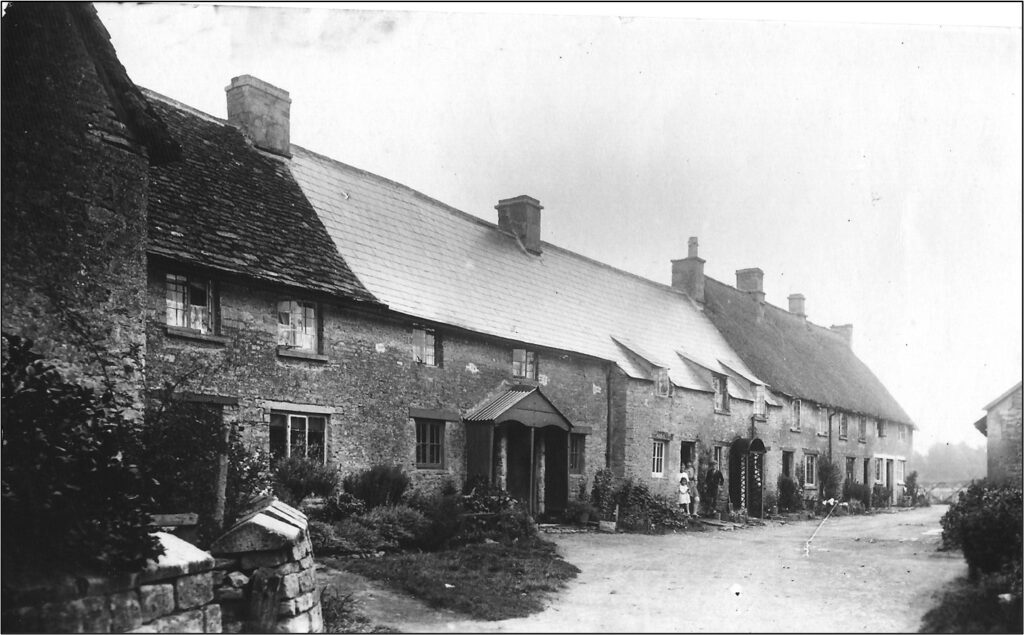
The Terrace probably dates from the 18th Century, though it was not built in one go but appears to have been added to over the years. In the photograph (figure 7) the furthest cottages are still thatched, whilst those to the centre appear to have been recently upgraded with Welsh slate. The whole terrace would once have been thatched. They are accompanied by a row of single-story utility buildings that may have provided washing and toilet facilities to the terrace at one time.
Amelia Cottage, number 48, is another house illustrating the modest scale of workers dwellings. A blocked-up doorway still visible to the façade shows that this was once two small houses of one up one down. Each home would have one hearth, still indicated by the two chimney stacks.
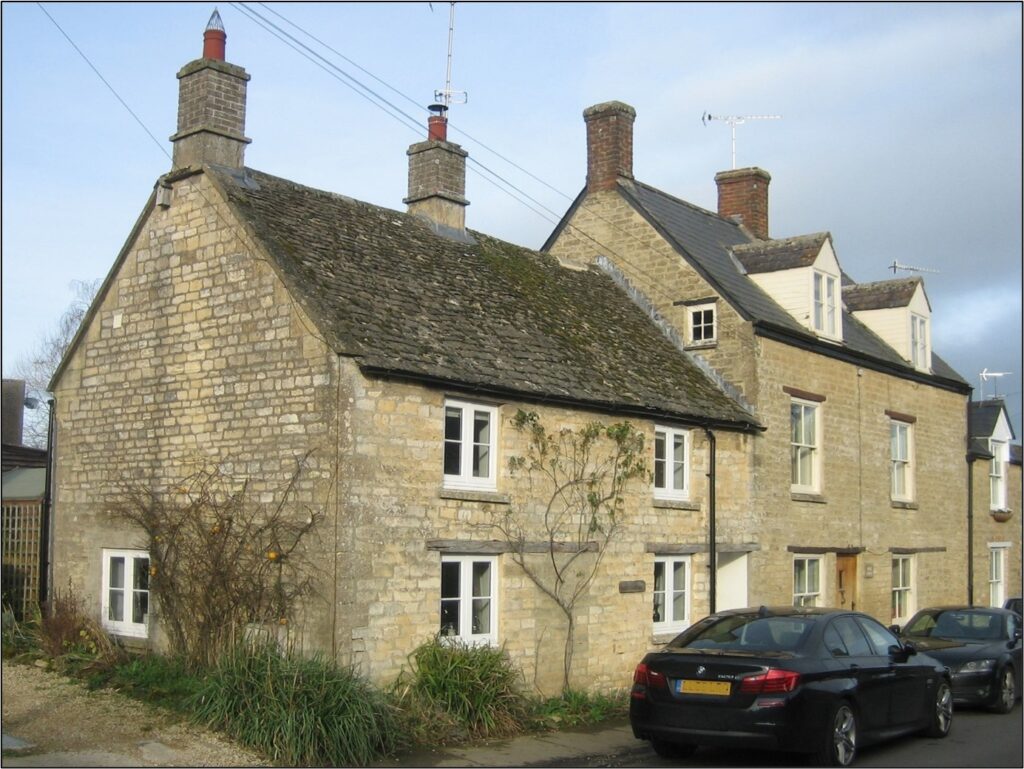
Before the later 19th Century, the High Street would have been primarily a working street, lined by several farmsteads with accompanying barns and other utilitarian buildings. These were situated alongside other workshops such as wheelwrights, blacksmiths, and bakers, along with a few pubs and ale houses. These were all accompanied by clusters of workers cottages. There would have been no pumped water, no electricity or gas services, no sewerage service, and water closets (WCs) would have been external to the houses, sometimes with accompanying washhouses.
Old photographs illustrate the working nature of the High Street, but as these only go back to the late 19th Century we have to imagine what the street looked like earlier still. No doubt there were more modest workers cottages even than those that survive, some would have been built from timber and most would have had thatched roofs. The photograph in figure 9 gives some indication of the earlier appearance of buildings on the High Street.
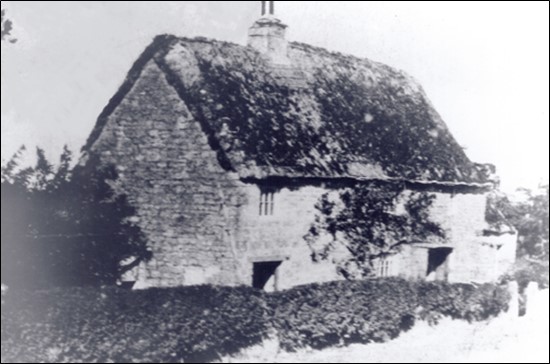
Many of the working farm buildings have either been demolished and replaced with more modern housing or have now been converted for residential use. The photographs below show three former barn-type buildings on the High Street. Some of these were still in use as workshops as late as the 1960s, but they are all now converted to living accommodation.
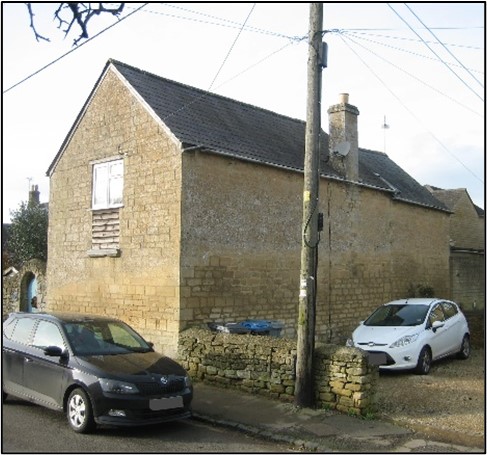
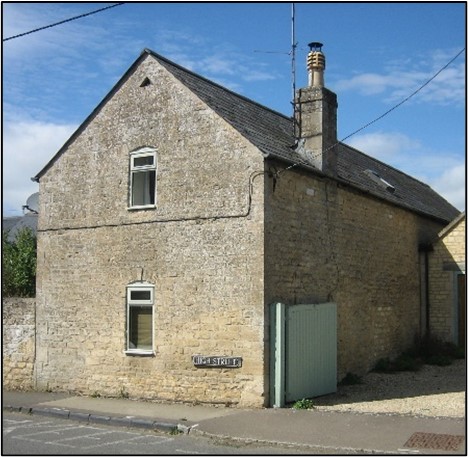
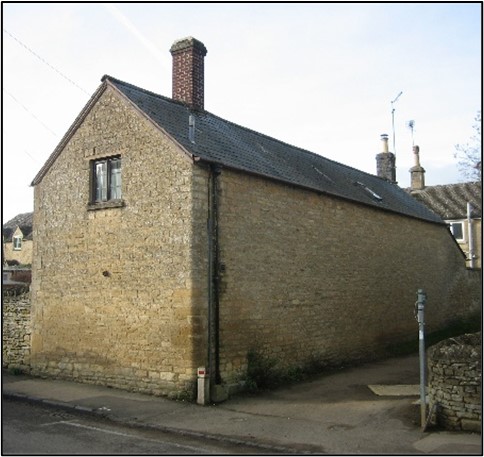
Three former barns/workshops on High Street, probably 18th or early 19th Century, converted to dwellings in the 20th Century.
The agricultural history of the street is also preserved in the names of some of the houses on the street and some adjoining streets. There is a “Jubilee Barn” (number 78), “Barn Cottage” (number 86), “The Old Farmhouse” (number 43), and “Poplar Farm Close”.
The existence of Poplar Farm is now preserved in the close named after it. It was the last surviving working farm on the High Street until the farmhouse and adjoining barns and outbuildings were swept away in the 1970s to be replaced by a small housing estate. The developers did at least preserve the old dry-stone wall that fronted the street and if you look carefully, you can still see some of the larger stones that framed the gateway to the farmhouse.
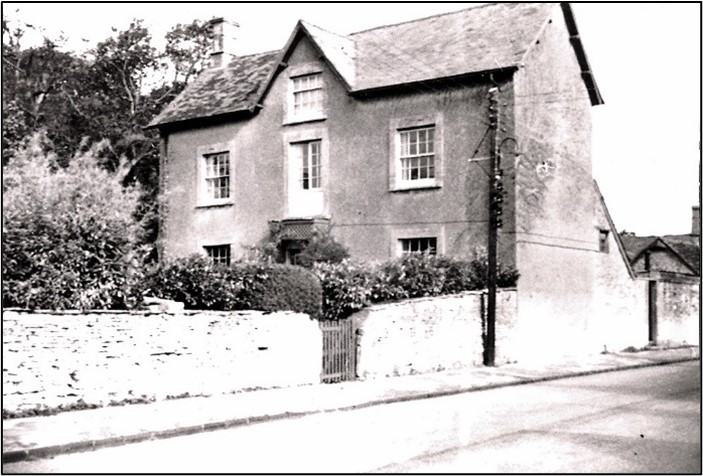
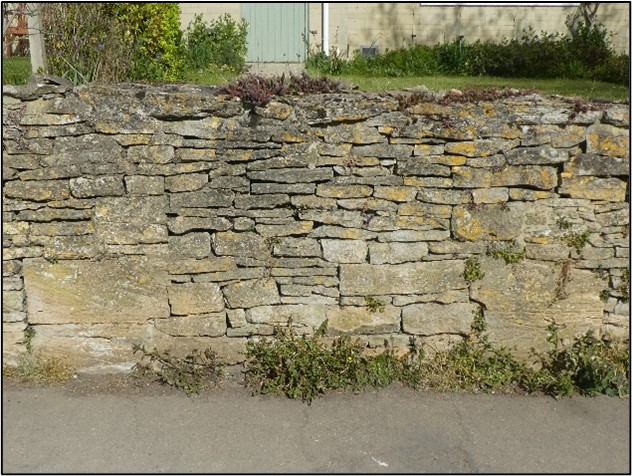
The High Street was abutted on both sides by farmland and small holdings. This is still largely true on the western side of the High Street, but the eastern side is now bounded by further residential developments that occurred from the 1950s onwards. The driving of livestock along the High Street would have been a common sight until the 1950s.
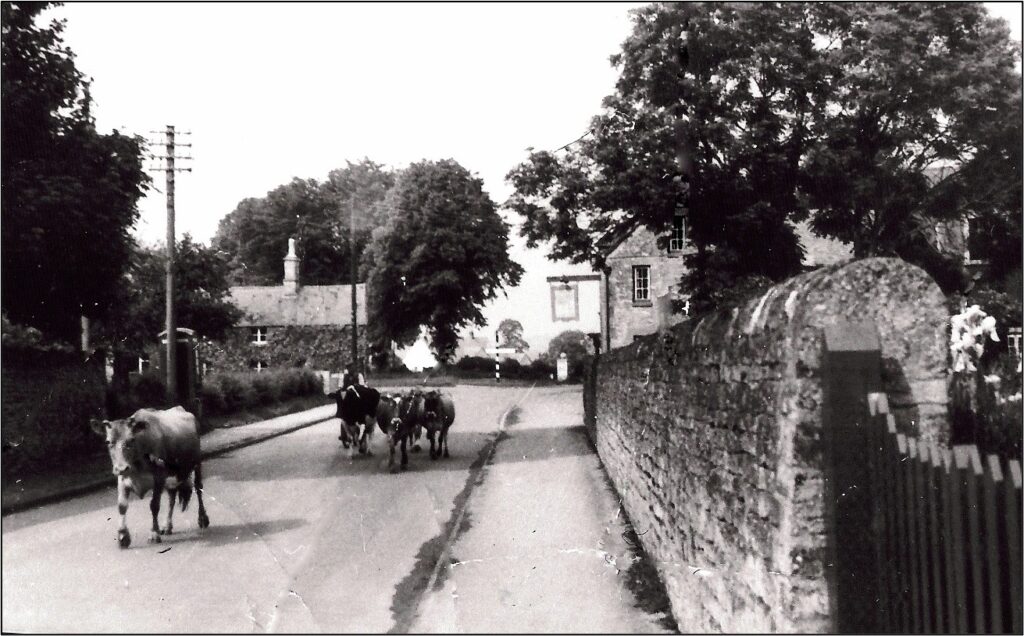
Introduction | Before the 19th Century | The 19th Century | Shops and Pubs | Religion | 20th and 21st Centuries | Article Intro

